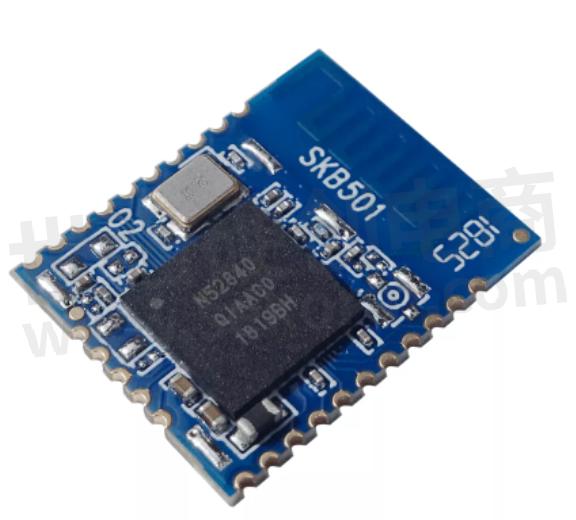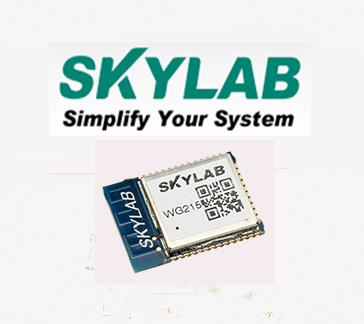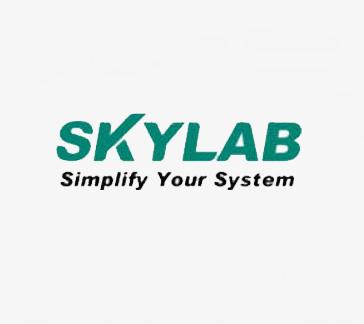6 Facts about Low Energy Bluetooth ble Module




What is Bluetooth Low Energy?
Firstly, also marketed as Bluetooth Smart, Low energy Bluetooth BLE module was introduced in the Bluetooth 4.0 specification as an alternative to Classic Bluetooth.

Like its predecessor, BLE technology uses a wireless technology based on a radio frequency, in the free band of 2.4 GHz in order to connect neighboring devices with each other.
Bluetooth Classic VS Low Energy
Further, the main difference with low energy Bluetooth BLE module, as can be easily deduced from the name, is the reduced energy consumption. Indeed, for BLE, the bit rate is 1 Mbit / s (with an option of 2 Mbit / s in Bluetooth 5) and the maximum transmission power is 10 mW (100 mW in Bluetooth 5). As well as, this means that the power used is less than half of what it used to be.
Secondly, Bluetooth Low Energy was first unveiled in 2004, following a Nokia research project. The first smartphone equipped with Bluetooth 4.0 was the iPhone 4S, in October 2011, which followed by many others. Today, virtually all new smartphones equipped with Bluetooth 4.0 or higher.
BLE and the Internet of Things
Low energy Bluetooth BLE module is one of the main technologies that make the Internet of Things ( IoT ) possible. For example, tons of Internet-connected devices, used for personal health care, fitness, sports, entertainment and tracking. Now use Bluetooth Low Energy to communicate with smartphones and tablets, including iPhones, Android phones, Windows and BlackBerry.
It estimates that in 2018 devices equip with Bluetooth reach the quota of 4 billion: here you can consult the complete list of all devices equipped with Bluetooth.
Low energy Bluetooth BLE module is attractive to consumer electronics and internet-connected machine manufacturers due to its low cost. It has long battery life, and ease of implementation.
In addition, from thermometers and heart rate monitors, from smartwatches to proximity sensors, Bluetooth Low Energy facilitates short-range wireless data transmission between devices, powered by a simple watch battery.
Bluetooth beacon comes with an internal battery
In addition, to the devices that we all know, and that we probably already have in our pockets. There are active tags that use Bluetooth technology to send information. These tags call Bluetooth beacons and send signals at regular intervals, in a range that can be adjusted.
These Tags, being active, require a power supply, therefore are usually equipped with an internal battery. Thanks to the low consumption of this technology, however, the battery can last several years.
The battery life of these devices depends on various factors
It depends on hardware, frequency, and transmission power. Many beacons warrant a battery life of up to 5 years at medium settings.
Low energy Bluetooth BLE module sends information mainly through the iBeacon and Eddystone protocols, developed by Apple and Google respectively.
RTLS - Localization in real time
Low energy Bluetooth BLE module technology is often associated with RTLS (Real-time locating systems), or real-time localization systems. In fact, it is possible to accurately determine the position of a Beacon in a confined space, using special Bluetooth Gateways.
One of the most used software systems is the BLE platform. Thanks to the methodology with the angle of arrival (AoA, Angle-of-Arrival) and to positioning algorithms developed ad hoc, Ble allows the real-time tracking of active Bluetooth BLE tags, with centimeter-level accuracy. Skylab(天工测控) 's Low energy Bluetooth BLE module solution considers one of the most reliable and versatile, customizable and scalable for all sectors.
Encapsulated Bluetooth Low Energy (BLE) technology
· Lighting control - remote light and controls are possible thanks to the Bluetooth Low Energy module
· Lighting system can build up to 127 devices, sensors, dimers, power supplies
· Control by wire is a thing of the past.
· Lighting controllers and control systems with synchronization between each other Mesh technology
· Decentralized center system and synchronization in the IoT cloud
· Low energy Bluetooth BLE module control controller can be from a smartphone or tablet, all settings synchronize.
Bluetooth® Low Energy standard, the energy source for collecting energy
· Bluetooth Low Energy operates on a frequency 2.4GHz and is compatible, combining 2 IoT devices.
· Both control and cloud sync.
· Controllers and lighting control systems with synchronization between themselves.
Range of action: 75 m in an open field; this value decreases depending on the environment and installation methods (metal plates, metal walls).
Radio channels that can use by default: CH 37/38/39 (2402 MHz / 2426 MHz / 2480 MHz).
Operating temperature: -25 to +65 ° C
The simplicity and widespread acceptance of Low energy Bluetooth BLE module technology mean that any Bluetooth device can pair with another nearby device through a process known as pairing.
One device acts as the master and the rest of the devices on the network/Picante act as slaves. The master device acts as a hub, and the slaves communicate through it one with the other. Another important feature of Low energy Bluetooth BLE module technology is the use of frequency hopping to reduce the effects of interference.
Low Energy wireless technology
Bluetooth Low Energy is an intelligent and economical version of Bluetooth wireless technology. It is already playing a significant role in making smart gadgets even smarter by making them smaller, more affordable and less complex.

Bluetooth Low Energy (BLE), also marketed as Bluetooth Smart, began its development as part of the Bluetooth core specification version 4.0. It was originally developed by Nokia under the name Wibree before being adopted by the Bluetooth Special Interest Group (SIG).
It initially focused on providing the lowest possible power radio standard specifically optimized for low cost, low bandwidth, low power consumption and low complexity.
Bluetooth Low Energy module advantages
Low energy Bluetooth BLE module design goals are evident from the base specification, which demonstrates the ambition to make BLE a true low power standard designed to be put into practice by semiconductor manufacturers and use in practical applications with minimal power consumption and a minimal budget.
This is already a widespread technology that can really provide long-term operation from a single disk battery.
While Low energy Bluetooth BLE module is excellent on its own, which has led to its phenomenal speed of adoption, it is the right technology with reasonable trade-offs that came at the right time.
- |
- +1 赞 0
- 收藏
- 评论 0
本文由翊翊所思转载自SKYLAB,原文标题为:6 Facts about Low Energy Bluetooth ble Module,本站所有转载文章系出于传递更多信息之目的,且明确注明来源,不希望被转载的媒体或个人可与我们联系,我们将立即进行删除处理。
相关推荐
【技术】解析蓝牙5.0、5.1、5.2的区别——以天工测控BLE5.0/5.1/5.2蓝牙模块为例
SKYLAB作为蓝牙模块研发和生产厂家之一,现有目前支持5.0的蓝牙模块SKB501、SKB380、SKB381;支持5.1的蓝牙WiFi组合模块LCS2028、WG235、WG236、WG238;支持5.2的蓝牙模块SKB378。
The 7 Most Dominant Features of Bluetooth BLE Module
In this article, SKYLAB introduces the what is Bluetooth Low Energy (BLE), and its applications. Then lists the pros and cons of BLE module.
IOTE·2023深圳物联网展开展在即,SKYLAB&95POWER展品抢先知
9月20日至22日,无线模块专业厂商SKYLAB&位置服务提供商95POWER,与您相10号馆,将在展位号10C13展位。优势展出备受关注的GPS模块、GPS北斗模块、北斗三号定位模块、双频多模GNSS模块、惯导模块、RTK模块、授时模块、WiFi模块、BLE蓝牙模块、UWB模块、防爆蓝牙信标、蓝牙网关、UWB标签、UWB基站硬件产品及蓝牙/UWB人员定位、资产定位等解决方案。
【选型】用于物联网智能家居领域的WiFi/蓝牙/WiFi+蓝牙组合模块推荐
本文讲解基于WiFi模块、蓝牙模块、WiFi+蓝牙组合模块串口通信的物联网智能家居升级体验。SKYLAB智能家居产品中内置UART WiFi+UART蓝牙二合一组合模块(WG215/WG222),用户手机下载相关APP,通过手机蓝牙与智能家居产品中的BLE蓝牙模块建立连接,也可以通过路由器连接WiFi与智能家居产品中的WiFi模块建立连接,获得智能家居产品的控制权限。
Requirements for Bluetooth Modules in Intelligent Security Systems and Applicable Modules for Tiangong Measurement and Control
The Bluetooth module in the intelligent security system needs to have characteristics such as low power consumption, high security, stable connectivity, suitable transmission distance and penetration, small size and easy integration, multi device connection capability, anti-interference ability, and fast response. The SKB369 Bluetooth 4.2 low-power module from Tiangong Measurement and Control is suitable for devices with strict cost and power requirements; The SKB501 Bluetooth 5.0 module is suitable for intelligent security scenarios that require high transmission distance and performance.
WattUp PowerHub Developer Kit User Guide Application Note
型号- DA2223,DA14682,EN3913M,BQ25120A,DA4100,EN3921,DA14585
CC2340R5 Bluetooth 5.3 LE Modules Deliver Industrial-grade Performance, Ultra-low-power Consumption and Robust Connection
New CC2340R5 Bluetooth 5.3 Low Energy (BLE) modules are now in stock with four types - RF-BM-2340B1I, RF-BM-2340A2, RF-BM-2340A2I and RF-BM-2340C2.
智能安防系统蓝牙模块需求及天工测控适用模块——SKB369和SKB501
智能安防系统中的蓝牙模块需具备低功耗、高安全性、稳定连接性、合适传输距离和穿透性、小尺寸易集成、多设备连接能力、抗干扰能力和快速响应等特点。天工测控的SKB369蓝牙4.2低功耗模块适合对成本和功耗要求严格的设备,如蓝牙门锁、传感器等;SKB501蓝牙5.0模块适用于对传输距离和性能要求较高的智能安防场景,如大型场所安防监控、远程智能门锁等。
SKB501 Multiprotocol Bluetooth 5/ANT Module Datasheet
型号- SKB501-XXPI,SKB501-CSPI,SKB501-CSEI,SKB501
天工测控蓝牙模块在远程医疗领域的广泛应用:具有高稳定性、低功耗、快速连接等特点
天工测控作为蓝牙模块领域的知名企业,一直致力于为远程医疗提供高品质的蓝牙模块产品。其蓝牙模块具有高稳定性、低功耗、快速连接等特点,能够满足远程医疗设备对无线通信的严格要求。
蓝牙模块SKB501在智能安防中的应用,实现更加智能化的安全管理
在当今社会,智能安防系统的重要性日益凸显。随着科技的不断进步,蓝牙模块SKB501为智能安防领域带来了新的机遇和突破。
【产品】SKYLAB的多种GPS/北斗/WiFi/蓝牙模块,助力物联网产业
2019年已经结束了,回顾2019年,SKYLAB旗下产品线都新增了多款创新型且更具竞争优势的高品质高性能GPS模块、北斗模块、GNSS授时模块、WiFi模块、蓝牙模块以及蓝牙室内定位硬件、UWB室内定位硬件产品。下面就来简单介绍一下这些无线模块是如何服务于物联网产业的。
蓝牙Mesh应用:智能照明和数据传输
比蓝牙技术,蓝牙Mesh更适用于多对多无线通信场景,并特别提高了构建大范围网络覆盖的通信效能,因此能够在智能楼宇、智能工业、智慧城市和智能家居等新兴市场的发展中发挥着关键作用。本文介绍SKYLAB基于蓝牙Mesh的无线照明控制解决方案和物联网数据传输解决方案。
Application of Bluetooth Module SKB501 in Intelligent Security
In today‘s society, the importance of intelligent security systems is increasingly prominent. With the continuous advancement of technology, the Bluetooth module SKB501 has brought new opportunities and breakthroughs to the field of intelligent security.
电子商城
服务
支持 3Hz ~ 26.5GHz射频信号中心频率测试;9kHz ~ 3GHz频率范围内Wi-SUN、lora、zigbee、ble和Sub-G 灵敏度测量与测试,天线阻抗测量与匹配电路调试服务。支持到场/视频直播测试,资深专家全程指导。
实验室地址: 深圳/苏州 提交需求>
提供语音芯片、MP3芯片、录音芯片、音频蓝牙芯片等IC定制,语音时长:40秒~3小时(外挂flash),可以外挂TF卡或U盘扩容。
最小起订量: 1pcs 提交需求>





































































































































































































登录 | 立即注册
提交评论